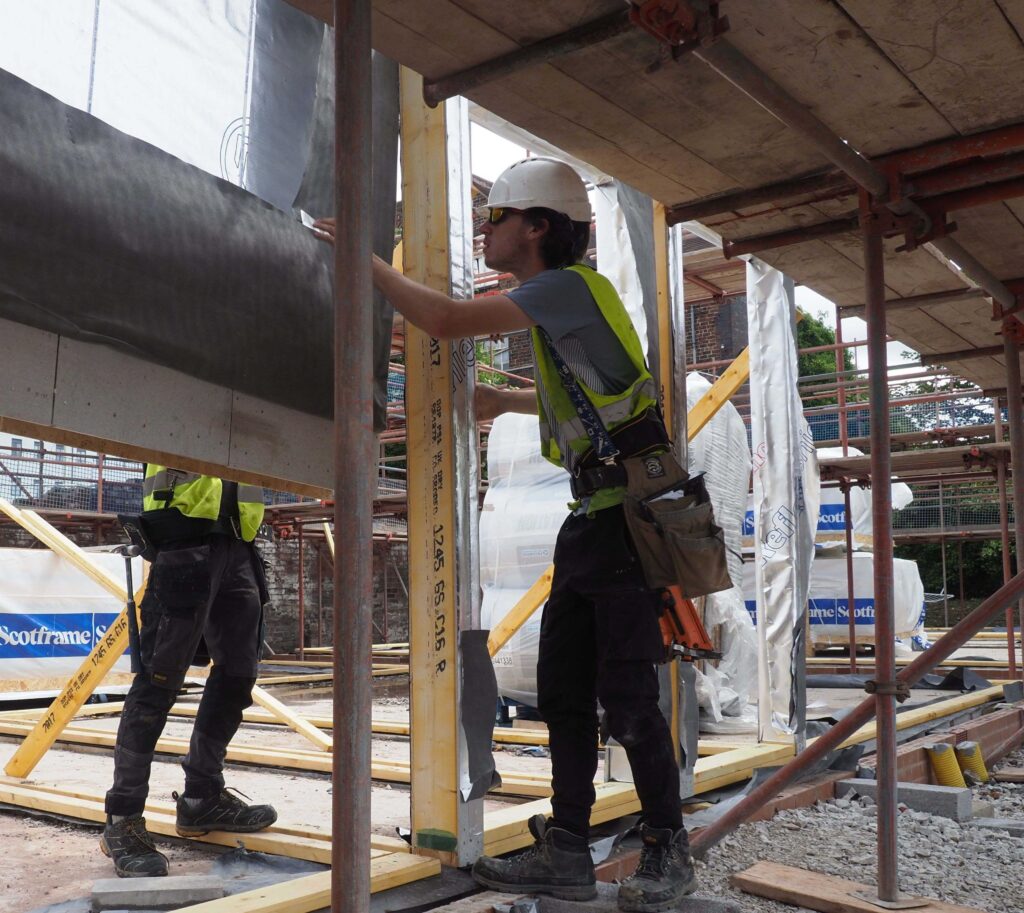by Chris Griffiths, Marketing Manager – Public Housing
Earlier this summer we delivered a detailed WLCA (whole life carbon assessment) comparing the carbon impact of our EnveoVent through-wall timber frame solution to a traditionally built brick and block alternative. You can view the executive summary here.
It would have been easy (and believe me, it was tempting) to lead this blog with a bold headline along the lines of, “Saint-Gobain definitively answers the timber-frame carbon question” – but anyone who’s looked into carbon reporting will know that a “definitive report” is a unicorn. As the oft-repeated truism goes, if someone tells you it’s easy, they either haven’t understood it, or they’re lying.
The fact remains that carbon reporting is still in its infancy. It’s taken huge leaps over the last couple of decades and we’re arriving at far better understanding in terms of detail and consistency, but carbon accounting remains riddled with issues. It’s very theoretical, it’s difficult to make precise “apples for apples” comparisons between materials and systems, and although some clear front runners are emerging, the construction sector has yet to settle on a consistent methodology or system for calculating or presenting the data.

The imperative is to make the best of what we have.
These are no reasons to dismiss carbon reports though. The science is clear; CO2 is the single largest contributor to climate change so we need to reduce emissions fast. While it could be argued that all carbon reports are wrong, what’s certain is that they’re becoming less wrong year on year. While we continue to strive for carbon consistency and transparency, in the meantime we should take the information that’s available, interrogate it, and make the best decisions we can based on the evidence we have – and then be agile and prepared to change should new evidence come to light.
In short: we’re in the middle of an exciting phase of learning, so keep your eye on the horizon but be prepared for a bumpy ride.
A thorough, detailed and fair carbon report.
With that preamble in mind, I’m really keen not to downplay our latest report. It’s a detailed, thorough, transparent and very compelling case study. We’ve augmented our own internal team of experts with highly-regarded external agencies and worked hard to create a report that will stand up to any level of scrutiny. We’ve employed long-established RICS WLCA methodology and presented our findings (and assumptions) clearly. It’s been peer reviewed to ensure clarity, consistency and fairness.
What makes this study particularly robust and defendable is that the timber frame home at its core isn’t a theoretical model – we’ve used data from the as-built eHome2, the home we actually constructed in Salford University’s climate chamber using our EnveoVent complete wall system. We’ve compared this with an identical home made from different materials and used the same assumptions for both buildings.
It’s important to note that we have assumed that the in-life performance of each home is identical. Both were designed to meet the same envisaged requirements of the Future Homes Standard – which includes net zero operation with regards to heating, hot water, lighting and ventilation.
The results are clear.
So what did we find out? Over a 60 year lifetime the whole life embodied carbon of an EnveoVent timber frame building is 11% lower than a masonry alternative with PIR insulation. That’s 9,500kg of carbon per home.
This reduction is down to the upfront carbon saving – modules A1-A5 for the carbon geeks, or features such as renewable materials in the structure, and smaller foundations required for the lighter external walls. When we interrogate the upfront carbon alone, the data gets really interesting; the upfront emissions of our home are 21% lower than the masonry alternative.
The nuances of different emissions.
However, as discussed previously, we’re aware that there are contentious issues in carbon reporting. One of the current hot topics is the measurement of biogenic carbon as against non-biogenic carbon. Simplistically, biogenic carbon is the carbon absorbed, stored and released by natural fauna (a naturally occurring process) whereas non-biogenic carbon has not been absorbed by living matter – most commonly, this is the carbon stored in fossil fuels which have taken millenia to accrue their high carbon content. It’s widely accepted that biogenic carbon is preferable, but the calculation of the benefits is still a matter of debate.
In the interests of transparency then, the 21% reduction we’ve reported in our upfront emissions excludes biogenic carbon. When we include biogenic carbon, that reduction increases significantly to 57%. We’ve chosen to lead with the lower number to avoid accusations of greenwashing.
So whichever way you look at it, this report provides clear and compelling evidence of what most people would intuitively assume; that homes built using timber and rockwool insulation are more sustainable than homes built using bricks and foam insulation.
Other reports are available, obviously. The only way we’re going to arrive at the truth is by examining and discussing the various merits of each one – so I’d welcome thoughts and opinions from the wider construction sector.